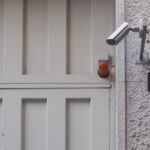How To Install A Bathroom Fan Through The Roof

A bathroom vent is important and keeps your bathroom clean and sanitary.
A lot of bathrooms have bathroom fans installed and vented through the wall, being the simplest option.
However, if your bathroom is in the center of your house or you do not have the space to vent through the wall, you can vent the bathroom fan through the house’s roof.
As a result, if you really want to know how to vent a bathroom fan through the roof, you’ve come to the right place.
Venting a Bathroom Fan Through the Roof
Bathroom fan venting is not a new concept, and managing the moisture generated in the bathroom is necessary to keep your bathroom’s walls mold-free. Many people allow the duct to leak into the attic, but this can cause a variety of issues with the attic’s surface and walls. So, let’s get started
The phase of preparation: acquiring the necessary items
Before you begin the installation operation, you must purchase or manage everything you will need. First and foremost, you must purchase a dominant fan. I’m talking about a fan that’s perfect for your bathroom.
Step 1: Install the fan in your bathroom.
If you complete this step successfully, you will have completed 60% of the work of venting a bathroom fan through the roof. So, first and foremost, you must cut a hole inside the most appropriate location of your bathroom ceiling. I would recommend drilling the hole in the exact center of the bathroom. To do so, measure the perimeter of the fan and draw a square or rectangle on that spot using these measurements.
After you’ve marked the area, get a jigsaw and start cutting. To cut more precisely, adhere to the previously drawn line. After the first round of cutting, use a hammer and chisel to remove the waste materials from the hole.
Clean the hole thoroughly and double-check that you have created the hole through to your house’s attic. Then, take the metal fan compartment and place it inside your home’s attic. Now, insert the metal fan compartment into the hole to ensure that everything is in working order. You can use screws to firmly hold the fan housing in that location.
Step 2: Connect the duct hose to the fan housing.
Go to the attic and get the insulated flexible duct line for attaching to the fan housing at this point. But first, connect a 4-inch 90-degree elbow-shaped hose to the exterior part of the fan housing. The setting will be more stable, and your duct line will be well supported. Use the foil duct to securely cling to it.
Remove the knockout hole from the cable connecting section as well. Finally, place the fan in the fan housing and ensure that it is properly centered. Use a screw to secure the fan in place and connect the flexible hose or duct line to the elbow; if you’re a newbie, start by inserting the fan from the top.
Step 3: making a roof vent hole
It’s now time to drill the bathroom exhaust fan roof vent hole. To accomplish so, you must first climb to the roof’s peak.
Please be patient! Before you get there, you must first determine the location of the roof vent hole while still inside the attic. Simply place a nail in the desired location. Ensure the nail is long enough and visible from above so you can readily identify that location from the roof. Keep in mind that the roof vent should not be too far away from the fan.
To climb to the rooftop, use a good condition extension ladder after marking the location with a nail. Draw a four-inch round hole around the nail near the point where it came through. Because the duct line is 4-inch wide, you must drill a four-inch hole. As a result, a larger or smaller hole will cause a variety of issues.
Some roof sheets must be removed in order to make the hole. If your roof is covered in shingles, you should remove them with a utility knife. Using a flat pry bar, pry open the seal of nearby roof covering sheets to slide the vent hood.
Then, cut the roof wood with a four-inch round-shaped hole saw or hole cutter. If your roof is composed of concrete, you should make use of a diamond blade to carry out the task.
Step 4: Insert the duct connector or collar.
A duct connector is a small piece of metal piping that connects a versatile duct hose to a roof vent.
Typically, at least one side of the duct collar is crimped, allowing the duct hose to freely slide into the collar. After sealing the duct hose to the duct connector with foil tape (or a zip tie), insert the other end of the duct connector into the roof hole, then caulk the edge of the shingles; after nailing the roof vent, it is essential to add a bead of caulking along the edge of the shingles that are on top of the upper and side flanges.
Recent Posts
Best Smart Light Switch For Google Home
6th May 2023Best No Hub Smart Bulbs For Alexa And Google Home
6th May 2023How to connect smart light to google home
6th May 2023Best 2 burner induction cooktop built-in
29th April 2023Related Articles
Best 2 burner induction cooktop built-in
Cooking is an art that requires the right tools and equipment to...
ByOlaoluwa Johnson T.29th April 2023Best Induction Cooktop for Large Pans
Induction cooktops have revolutionized the way we cook our food. With their...
ByOlaoluwa Johnson T.29th April 2023Best Freestanding Induction Range
Cooking is an essential part of our lives, and having a reliable...
ByOlaoluwa Johnson T.29th April 2023Best High-End Induction Range
When it comes to cooking, having the right equipment can make all...
ByOlaoluwa Johnson T.11th April 2023










